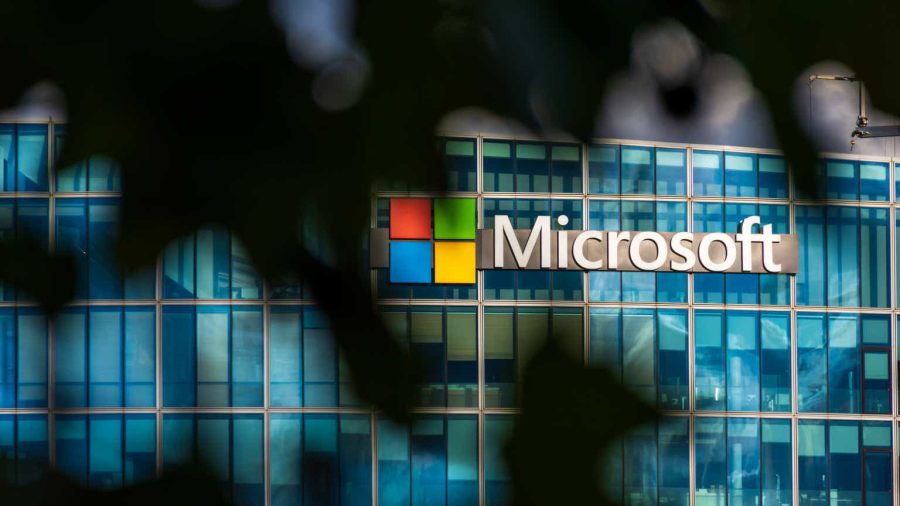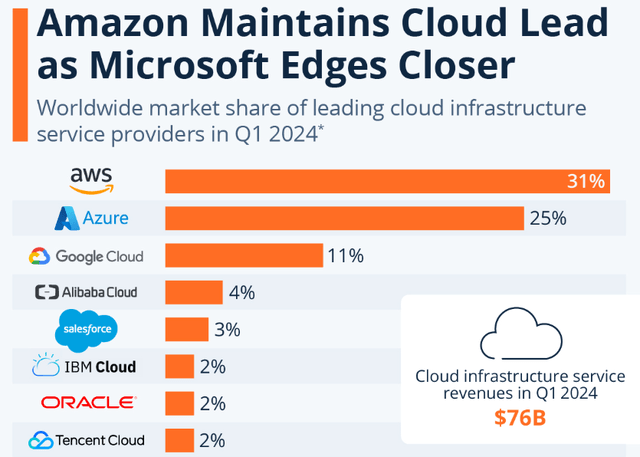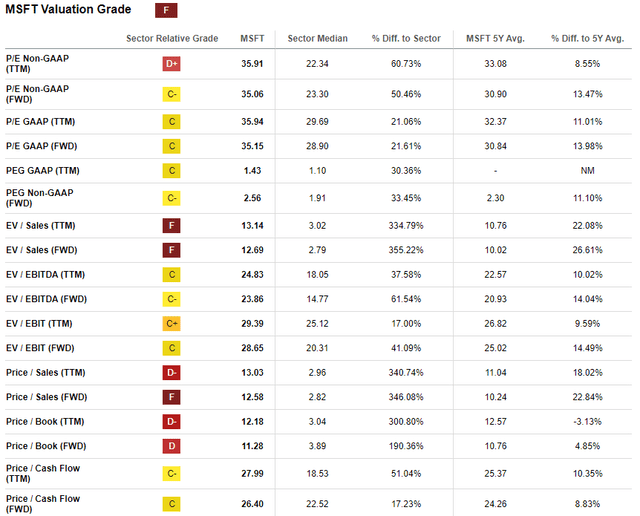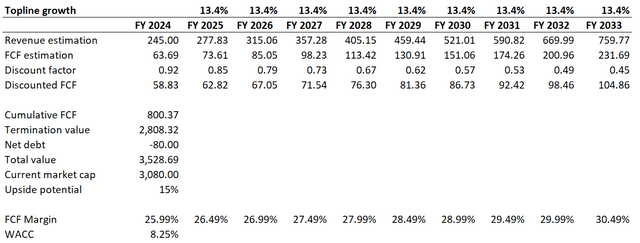Summary:
- Microsoft delivered a strong quarter, fueled by momentum in its cloud business and solid performance in other segments.
- The company’s cash pile of $80 billion provides financial flexibility for large acquisitions.
- Microsoft’s aggressive investments in data centers and AI infrastructure indicate strong conviction in the growth potential of these areas.
HJBC
Investment thesis
My previous bullish thesis about Microsoft (NASDAQ:MSFT) aged decently as the stock gained almost 2% over the last three months. A lot of positive developments happened since my previous call, and today I want to share my opinion about them. The company delivered another stellar quarter, mostly fueled by unstoppable momentum in Microsoft’s cloud business. Azure continues expanding its market share and it already owns a quarter of the global cloud infrastructure industry. Other segments also demonstrate solid performance, which helps in mitigating potential earnings volatility due to aggressive investments in R&D and data centers. MSFT is around 15% undervalued, which is a gift for the largest company in the world. All in all, I reiterate my “Strong Buy” rating for MSFT.
Recent developments
Microsoft delivered another strong quarter on April 25, beating revenue and EPS consensus estimates by a notable margin. Revenue grew by 17% YoY in fiscal Q3 2024. The adjusted EPS expanded from $2.45 to $2.94 and operating leverage was one of the key factors to the bottom line success. Microsoft’s operating margin expanded from 42.3% to 44.6% on a YoY basis, a massive improvement for a company of Microsoft’s scale.
Seeking Alpha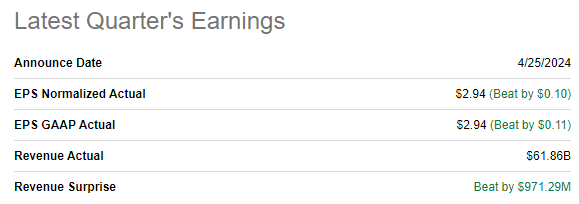
As a result of bottom line strength, Microsoft’s quarterly levered free cash flow [FCF] increased from $13.5 billion to $16.9 billion, even despite a $4.3 billion increase in CAPEX. As a result of strong FCF, the company’s balance sheet continued fortifying and MSFT currently has an $80 billion cash pile. This reserve provides MSFT with robust financial flexibility and makes it well-positioned for large acquisitions. To add context which will help understand how big Microsoft’s cash reserve is, the company acquired Activision Blizzard for $69 billion in 2023.
Seeking Alpha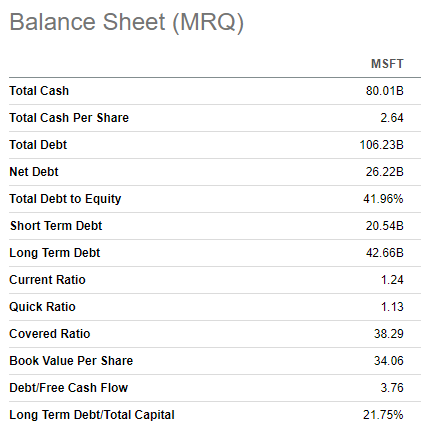
The company continues witnessing strong demand for Intelligent Cloud offerings, including artificial intelligence [AI] features and services. This business line outpaced consolidated revenue growth with a 21% topline increase on a YoY basis. Azure grew by 31% which indicates that the momentum for MSFT’s cloud and AI capabilities is still strong. According to crn.com, calendar Q1 2024 was the third consecutive quarter when Microsoft expanded its market share in the global cloud infrastructure market. Azure held a 25% market share in calendar Q1 2024, edging one step closer to Amazon’s (AMZN) AWS.
The management is willing to sustain strong momentum for its Cloud and AI business, which I see from investments into this area ramping up rapidly. The company plans to invest billions of dollars in data centers and AI hubs across the world. A $3.3 billion investment in data centers in Wisconsin was officially announced by the company. There is also a commitment to invest more than $4 billion in data centers in France. Several billions of dollars are also expected to be invested by MSFT in data centers in Japan and the UK. This aggressive pace of announcing billions of dollars into AI infrastructure indicates the management’s strong conviction in this bet. Microsoft likely does not want to miss out on a potential $1.3 trillion market opportunity, and the decision to invest aggressively in data centers appears to be a sound move.
Wall Street analysts are also quite bullish about the company’s financial performance in the near term. Fiscal Q4 revenue is expected to be $64.4 billion, indicating a 14.6% YoY growth. The adjusted EPS is expected to expand from $2.69 to $2.93, meaning that the company is likely to continue demonstrating improved operating leverage.
Seeking Alpha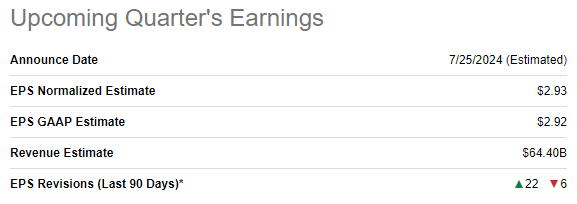
My optimism is also backed by the fact that Intelligent Cloud is not the only Microsoft’s business that demonstrates growth. Productivity and Business Processes, and More Personal Computing also demonstrated solid revenue growth both in fiscal Q3 and YTD. The same applies to the operating income, as both segments contributed substantially to the consolidated operating leverage.
Microsoft’s latest 10-Q report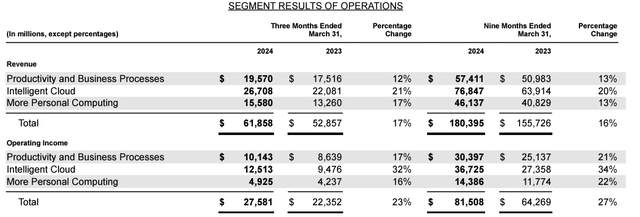
Valuation update
Microsoft’s stock rallied by 33% over the last twelve months and delivered a 10% return YTD. Valuation ratios are inherently high compared to the sector median because of Microsoft’s unmatched scale and strategic positioning. For companies like MSFT, I usually look at the comparison between current valuation ratios and historical ones. From this perspective, MSFT might look slightly overvalued if we compare to the previous five years’ averages. However, I believe that the AI revolution is definitely a game changer, and we already see how it boosts the company’s revenue and profitability. Therefore, in current circumstances with vast AI opportunities for MSFT on the table, I am not comparing to historical valuation ratios.
To figure out my target price, the discounted cash flow [DCF] approach is selected. I use the same 8.25% WACC as I did in my previous simulation, which is in line with the recommended range by valueinvesting.io.
Revenue growth is a crucial assumption which significantly affects the fair value. Consensus estimates forecast revenue CAGR for the next decade to be 11%. This assumption seems to be too pessimistic, in my opinion. According to the below chart, MSFT demonstrated 11.4% revenue CAGR over the last decade when there was no comparable digital revolution which we evidence nowadays. I believe that given MSFT’s positioning in the AI revolution, upgrading the last decade’s CAGR by at least two percentage points will be fairly conservative. Therefore, I implement a 13.4% revenue CAGR for the next decade.
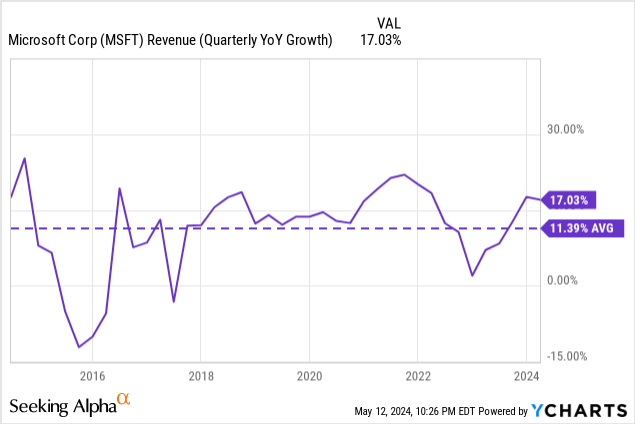
For the base year, I implement a TTM levered FCF margin of 25.99%. Considering MSFT’s strong track record of profitability improvement and bright revenue growth prospects, I incorporate a 50 basis points yearly FCF expansion. With all the above underlying assumptions, the business’s fair value is $3.5 trillion. It is 15% higher than the current market cap, indicating attractive upside potential. When I adjust the last close by 15% up, I get a $477 target price for MSFT.
Risks update
The market’s sentiment around AI is cooling down, which we see from semiconductor stocks’ like Super Micro Computer (SMCI) or Advanced Micro Devices (AMD) movements after Q1 earnings releases even despite robust performance. It is likely that after such a massive rally in several names, investors might believe that there is not much room for further growth. Since MSFT is at the forefront of the secular AI shift, it might be one of the primary stocks which will experience cautious market sentiments around further growth. Therefore, potential investors should be ready to hold the stock for longer before they see another big rally.
The competition to be the leading company in the current AI revolution is fierce. Not only does Azure improve its strategic position, but Google’s Cloud also demonstrates robust momentum. Google Cloud revenue jumped by 28% in Q1, indicating that the competitor which was considered as a laggard compared to AWS and Azure is gaining its recognition in the market. Moreover, Google plans to keep this momentum as the company is pouring billions of dollars into new data centers to fuel further cloud and AI growth. AWS plans to make the largest capital investment in the state of Indiana’s history with its $11 billion planned to be invested into new data centers.
Being the world’s largest company with a massive footprint across several industries means that antitrust risks might be inevitable for Microsoft’s investors. Recent news suggests that Microsoft has been accused by Spanish authorities of anti-competitive behavior in the cloud computing market. Since Spain is a European Union [EU] member, a large market for MSFT, there is a risk that this issue might escalate to the EU level. This might eventually result in substantial antitrust charges and reputational damage for MSFT.
Bottom line
To conclude, MSFT is a “Strong Buy”. The stock is still substantially undervalued despite a massive momentum demonstrated in the Cloud business, which is powered by unmatched AI capabilities. Microsoft’s fortress balance sheet allows the company to pour billions into expanding its AI infrastructure, which will likely help the company to protect its competitive edge.
Analyst’s Disclosure: I/we have a beneficial long position in the shares of MSFT either through stock ownership, options, or other derivatives. I wrote this article myself, and it expresses my own opinions. I am not receiving compensation for it (other than from Seeking Alpha). I have no business relationship with any company whose stock is mentioned in this article.
Seeking Alpha’s Disclosure: Past performance is no guarantee of future results. No recommendation or advice is being given as to whether any investment is suitable for a particular investor. Any views or opinions expressed above may not reflect those of Seeking Alpha as a whole. Seeking Alpha is not a licensed securities dealer, broker or US investment adviser or investment bank. Our analysts are third party authors that include both professional investors and individual investors who may not be licensed or certified by any institute or regulatory body.
